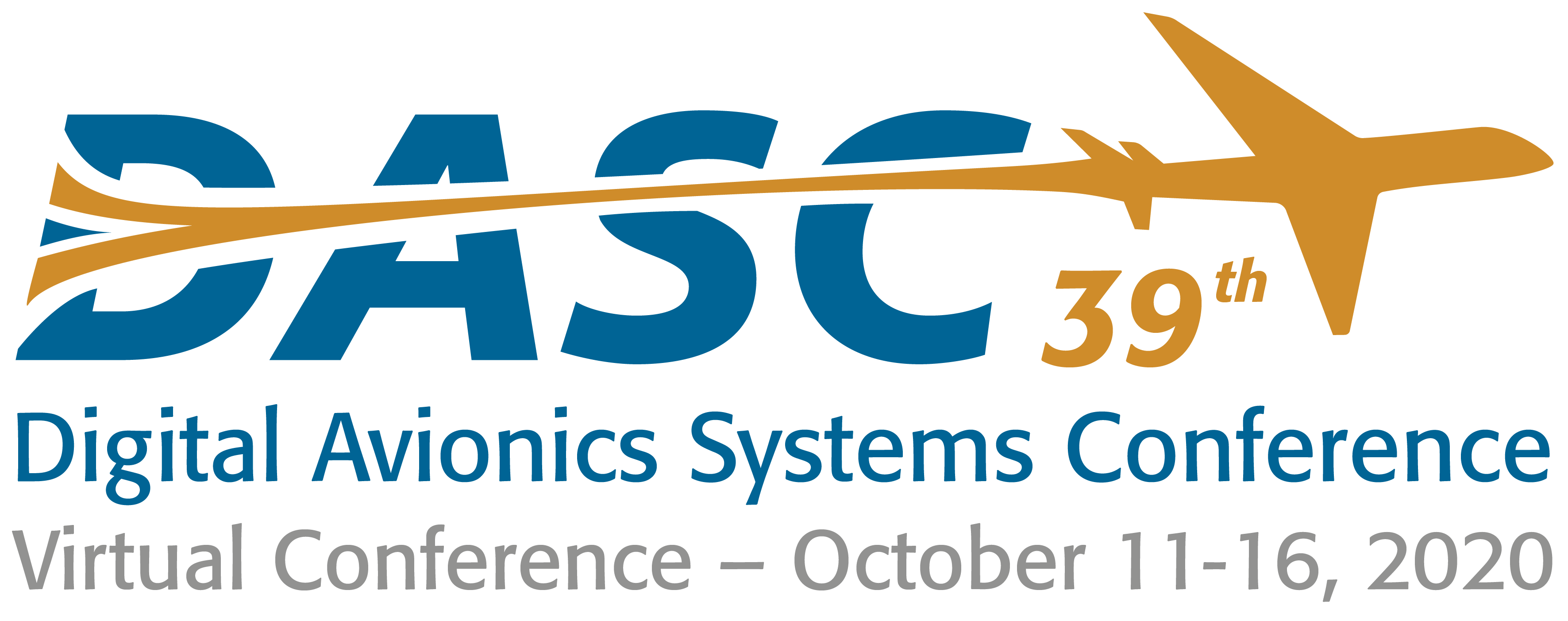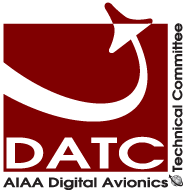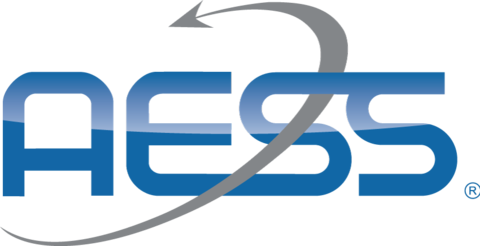DAY 1 TUTORIAL DESCRIPTIONS
AVIONICS I
DESCRIPTION
This tutorial explores architectures from numerous civil and military aircraft. Key architecture and design challenges are described for legacy as well as the newest aircraft types. Architectures are examined with comparisons of hardware and avionics functions of each are discussed in detail. Civil aircraft investigated include Boeing 787 and Airbus A350. Military aircraft include F-22 and Rafael. IMA 2G and other advanced concepts will be explored. Specific architecture examples are used to represent real word design challenges and solutions. Integrated and connected aircraft concepts are explored in reference to the integrated modular avionics architectures and how they can support integrated digital datalink and future air traffic management. Architectures have been carefully chosen to cover the following:
- Broad spectrum of aircraft types, military and civilian
- Federated and integrated designs with emphasis on the latest modern commercial and military aircraft
- Emphasis on the latest integrated architectures with partitioning and connected aircraft
- Line Replaceable Unit (LRU) vis-à-vis modular packaging
- Impact of the Modular Open Systems Approach (MOSA) on architecture
- Range of non-essential to flight critical applications and the impact on future designs
- Connected aircraft and design decisions for integrated designs
PRESENTER BIO
Timothy Etherington graduated from North Dakota State University with a Master of Science in Electrical Engineering in 1987. Tim conducts flight deck research at NASA Langley Research Center and is recently retired from Collins Aerospace as a Technical Fellow. Mr. Etherington had worked at Rockwell Collins for over thirty years with extensive experience in military and commercial flight deck design and applied human factors. He helped design the flight decks for the Canadair Regional Jet and other business and regional primary flight display systems. He led the perspective, synthetic and enhanced flight deck research at Rockwell Collins including the flight-testing completed with NASA Langley and Air Force Research labs. He holds an FAA Airline Transport Pilot certificate with a Citation Type Rating and holds commercial fixed wing and private pilot rotorcraft ratings. Mr. Etherington is co-chair for RTCA SC-213 working on standards for enhanced and synthetic vision systems.
UAS
DESCRIPTION
Electric Vertical Takeoff & Landing (eVTOL) and Unmanned Aerial Vehicle (UAV) aircraft and systems are rapidly evolving with over 450 known programs under development. And growing with future Urban Air Mobility (UAM) forecast to be aviation's largest growth area over the next decade. But which certification rules apply? Are eVTOL and UAS systems certified as typical civil aviation, military aviation, general aviation, or a hybrid approach?
eVTOL and UAS systems will need to provide evidence of development processes including Safety, Requirements, Design, Code, Test, Quality Assurance, etc. Many UAV and eVTOL users first-time users of applicable aviation guidelines such as ARP4761 (Safety), ARP4754A (Aircraft & Systems Development), DO-178C (Software) and DO-254 (Hardware) - they often complain of costs and schedules doubling while trying to comply. But are these standards really complex? What are their true meanings for eVTOL and UAS? How can they be understood and applied cost-effectively the first time? What are the top mistakes when starting such certification projects and how to avoid them? All of these topics are explained in this fast-paced introductory eVTOL and UAS avionics certification class.
KEY FEATURES:
- Understanding certification basic principles for eVTOL and UAS: explained for the "real world": yours
- Understanding the avionics development ecosystem of Safety, Software, Hardware and Certification
- Understanding the essential Plans, three Standards, Requirements, Design, Code, Verification, Quality Assurance, and Configuration Management
- Common eVTOL and UAS certification initiation mistakes: from beginner to intermediate quickly
- Applying traceability, transition criteria, and quality assurance (QA) audits
WHO:
Attendees may include engineers, managers, quality assurance or certification personnel; no aviation/avionics certification expertise required.
PRESENTER BIO
Mr. Vance Hilderman is Afuzion’s director of Avionics Certification. Holding a BSEE and MBA from Gonzaga University, and a Masters in Computer Engineering from USC (Hughes Fellow). Mr. Hilderman was previously the co-founder of TekSci (the world’s largest avionics software services company in the ’90’s), HighRely, and now AFuzion – performing technical avionics software/certification development at companies throughout the world.
Mr. Hilderman has focused on safety-critical avionics software, systems, hardware development and related technical products for 25 years. Considered an expert on safety critical software/computer systems and certification, Mr. Hilderman has consulted with ninety five of the world’s one hundred largest aerospace companies plus numerous medical, industrial and telecommunications entities Mr. Hilderman has trained over 17,600 avionics engineers and managers in 40 countries on DO-178B, ARP-4754, DO-178C, DO-254, DO-200A, DO-297, and safety/software development.
Mr. Hilderman is the principal author of dozens of technical whitepapers and avionics training protocols, plus the world’s best-selling book on avionics development/certification, published by Avionics Communications and titled “Avionics Certification – A Complete Guide …”; all royalties are donated to the Boy Scouts of America where Mr. Hilderman and two of his sons are Eagle Scouts. Mr. Hilderman will soon be publishing his next book to be titled “The Avionics Development Ecosystem” published by Afuzion Press.
DESCRIPTION
In the latest years, sense and avoid (SAA), or detect and avoid (DAA), has represented one of the main roadblocks to the integration of unmanned aircraft systems (UAS) operations. This course outlines and reviews architectures, technologies, and algorithms for SAA. First, starting from a discussion about what constitutes a UAS and how it is different than manned aircraft, basic SAA definitions and taxonomies are discussed. Ground-based/airborne and cooperative/non-cooperative architectures are covered. The SAA process is dissected into its fundamental tasks, which are discussed in details. Different sensing algorithms and technologies are presented, including radar and optical systems. Potential and challenges of multi-sensor-based systems and data fusion are pointed out. Techniques for conflict detection, and approaches for remotely operated or autonomous avoidance are introduced. The tutorial ends with an overview of current perspectives and recent progress relevant to SAA for UAS integration in the Air Traffic Management (ATM) system and in the framework of UAS Traffic Management (UTM) / U-Space and Urban Air Mobility.
PRESENTER BIO
Giancarmine Fasano is Associate Professor at the University of Naples "Federico II", where he holds courses in "Unmanned Aircraft Systems" and "Space Flight Dynamics". His research activities in the field of aeronautics are focused on UAS, and in particular on sense and avoid and cooperative multi-UAV systems. In the space field he is mainly interested in distributed space systems and proximity operations, with emphasis on relative motion design and control. He is Member of the Avionics Systems Panel of the IEEE Aerospace and Electronic Systems Society and Associate Editor of the IEEE AESS Magazine for the UAS area of specialty. He is also Member of the AIAA Sensor Systems and Information Fusion Technical Committee and of the IAA Committee on Small Satellites. He has co-authored over 110 publications and five book chapters.
DESCRIPTION
This course provides a fundamental background in assured navigation for unmanned aircraft systems (UAS). It first introduces the various UAS/RPAS application domains and operational environments, UAS flight management and path planning, required performance parameters, and autonomy at the various levels of the Guidance, Navigation and Control function. Furthermore, it addresses the foundations of Global Navigation Satellite Systems (GNSS) and inertial navigation and discusses the challenges of operating in the various target environments with sole-means GNSS. Next, augmentation methods and alternative navigation methods will be discussed with a focus on guaranteeing required navigation performance in, especially, GNSS-challenged environments. Finally, the course will talk about the role of the navigation function in surveillance, geo-fencing and relative navigation in case of swarms of UAS.
PRESENTER BIO
Dr. Uijt de Haag is the Edmund K. Cheng Professor of Electrical Engineering and Computer Science and a Principal Investigator (PI) with the Avionics Engineering Center at Ohio University since 1999. He obtained his M.S.E.E. degree from Delft University in The Netherlands in 1994 and a Ph.D. in Electrical Engineering from Ohio University in Athens, Ohio in 1999. He has authored or co-authored has authored or co-authored over 140 navigation-related publications and seven book chapters.
AUTONOMY
DESCRIPTION
In this course we are going to introduce concepts of decission making conducted by algorithms which led to current term Artificial Intelligence. The course is built around flight planning algorithms, their performance and sutability for different applications. Within our session we will focus on and summarize advantages and disadvantages of Breadth First Search, A*, Iterative Deepening A*, Theta*, and RRT* algorithms. Their reasoning process and path selection methodology with perspective of aerospace requirements are evaluated. Our focus will be on the randomization element and uncertainty of these algorithms. We will also describe selected evaluation parameters required by FAA and EASA Technical Standard Order (TSO) documents on electronic systems and what are the conflicts between these requirements and the natural principle of the existing path-planning algorithms. The influence of the performance of the navigation sensors and expected departure and arrival procedures which use the existing navigation means (INS, VOR, NDB, ILS, GPS) will be discussed. Finally, we describe the Artificial Intelligence phenomena and discuss the determinism of the currently used algorithms for flight-path panning and recovery.
PRESENTER BIO
Dr. Pavel Paces works at Artificial Intelligence Center at Faculty of Electrical Engineering, Czech Technical University in Prague, Czech Republic. He gained MSc and Ph.D. in aerospace engineering. Currently, he leads a group developing solutions for pilot training evaluation and fatigue measurement aiming on human machine interaction, processes and procedures. He received Honeywell Innovator award in 2011, he is member of IEEE Aerospace and Electronic Systems Society and AIAA.
DESCRIPTION
The use of remotely-operated vehicles is ultimately limited by economic support costs, and the presence and skills from human operators (pilots). Unmanned craft have the potential to operate with greatly reduced overhead costs and level of operator intervention. The challenging design is for a system that deploys a team of Unmanned Vehicles (UVs) and can perform complex tasks reliably and with minimal (remote) pilot intervention. A critical issue to achieve this is to develop a system with the ability to deal with internal faults, and changes in the environment as well as their impact on sensor outputs used for the planning phase.
The tutorial objective is to present step by step the development process (from requirements to prototyping) of an Intelligent Vehicle Control Architecture (IVCA) that enables multiple collaborating UVs to autonomously carry out missions. The architectural foundation to achieve the IVCA lays on the flexibility of service-oriented computing and agent software technology. An ontological database captures the remote pilot skills, platform capabilities and, changes in the environment. The information captured (stored as knowledge) enables reasoning agents to plan missions based on the current situation. The combination of the two above paradigms makes it possible to develop an IVCA that is able to dynamically reconfigure and adapt itself in order to deal with changes in the operation environment. The ability to perform on-the-fly re-planning of activities when needed increases the chance to succeed in a given mission. The IVCA realization is underpinned by the development of fault-tolerant planning and spooling modules (fault diagnosis and recovery) as well as a module called matchmaker to link services with available capabilities.
The IVCA is generic in nature and can be easily adapted to UVs from different domains (i.e. land, water, and air/space). However, the IVCA aims at a case study where Unmanned Marine Vehicles (UMVs) are required to work cooperatively. They are capable of cooperating autonomously towards the execution of complex activities since they have different but complementary capabilities. The above UMV configuration, where the marine robots are tasked to autonomously do mission works before recovery, is possible at a cost of endowing the UMVs with “intelligence” that in former solutions is provided by remote or even in-situ human pilots.
The IVCA development applies the software/systems engineering principles. The tutorial is structured in four parts. Part I (background) consists of a brief review of technologies related to the IVCA and a comparison of control architectures for autonomous UVs. Part II (requirements analysis and design) entails the user and system requirements, and the system architecture specification/design. Part III (implementation and integration) describes the IVCA realization based on Robot Operating System (ROS) for the above case study. Session IV (verification and validation) deals with the evaluation of the IVCA by means a simulation.
PRESENTER BIO
Dr. Carlos C. Insaurralde is a Senior Lecturer in Electronic Engineering in the Department of Engineering Design and Mathematics, University of the West of England, UK. His roles are Programme Leader BEng(Hons) Robotics and Module leader for courses from the Electronic Engineering and Robotics programmes. He received the MEng degree in Electronics from the National University of Cordoba, Argentina, in 1999, the MAst and PhD degrees in Computer Engineering (Mention “Doctor Europaeus” accredited by the European University Association) from the Universidad Complutense de Madrid, Spain, in 2005 and 2007 respectively, and the MPhil degree in Electrical Engineering from Heriot-Watt University, UK in 2014. He also received a PgCert in Learning and Teaching in Higher Education from Teesside University, UK in 2017. He is a Fellow of the Higher Education Academy (FHEA), UK and an IEEE Senior Member.
Dr Insaurralde has worked in collaboration with EADS (Airbus and Eurocopter), and BAE Systems as well as in different industrial sectors (aerospace, defense, maritime, and industrial automation). He has over twenty years of hands-on experience in software engineering, including over ten years of engineering research experience in robotics and autonomous systems. He is author of over eighty international publications, including a book and five book chapters. He is also author of fifteen technical project reports. His background is in architectures of intelligent and autonomous systems, multidisciplinary development of high-integrity systems, and metric assessment of systems performance. His research interest mainly focuses on intelligent automation and autonomy, including decision-making support for Air Traffic Management (ATM).
DAY 2 TUTORIAL DESCRIPTIONS
Avionics II
DESCRIPTION
The international standards D-326A (U.S.) and ED-202A (Europe) titled "Airworthiness Security Process Specification" are the cornerstones of the "DO-326/ED-202 Set": the only Acceptable Means of Compliance (AMC) by FAA & EASA for aviation cyber-security airworthiness certification, as of 2019. The "DO-326/ED-202 Set" also includes companion documents DO-356A/ED-203A: "Airworthiness Security Methods and Considerations" & DO-355(A)/ED-204(A): "Information Security Guidance for Continuing Airworthiness" (U.S. & Europe) and ED-201: "Aeronautical Information System Security (AISS) Framework Guidance" & ED-205: "Process Standard for Security Certification / Declaration of Air Traffic Management / Air Navigation Services (ATM/ANS) Ground Systems“ (Europe only).
This 3-hour fast-paced course will introduce attendees to the background, structure, basic concepts and essential practices of this new, unavoidable set of standards.
WHO SHOULD ATTEND
Attendees may include managers, engineers, quality assurance, certification personnel – as well as aircraft manufacturers, operators, maintainers, service providers and other aviation stakeholders, who need to prepare for Cyber-Security regulatory compliance of their aircraft/systems/organizations.
PRESENTER BIO
Aharon David is the Chief WHO (White Hat Officer) of AFuzion-InfoSec, providing Aviation Cyber-Security Certification training & consulting services worldwide.
Since 1981, Mr. Aharon David has worked in engineering of software and systems avionics, including junior-to-senior technical management positions. Among other duties, Mr. David served as the commander of the Israeli Air Force's Avionics & Control Software-development Center (ACSC) and head of System-Engineering & Interoperability of the Israeli Missile Defense Organization (IMDO) – and along the way developed, taught & commanded technical courses in the US and Israel, and was a speaker at international technical conferences.
In recent years, Mr. David has been a senior advisor to the Civil Air Authority of Israel (CAAI), specifically on software certification and Cyber-Security. He is currently a member of both RTCA's SC-216 & EUROCAE's WG-72 "Aeronautical Systems Security“, as well as all other aviation cyber-security standard-making committees, such as SAE G-32 and others.
Mr. David holds a BSc in Aerospace Engineering from the Technion – Israel's Institute of Technology, and an MBA from the Tel-Aviv University.
DESCRIPTION
DO-178C (ED-12C) and DO-254 (ED-80) are arguably the world’s most difficult software and hardware “standards” and many millions of lives rely on it yearly. But software/hardware development has rapidly evolved along with aircraft design: many new technologies must be considered, and certified: VHDL, IP Cores, C++, Model-Based Development, Multi-core, non-CPU based logic, and advanced tools. New techniques for specifying avionics requirements and design must also be understood. But what are detailed and derived DO-178C/254 requirements? How can C++ and OOT be safely used and certified per DO-332? What are DO-178C Model-Based Development best practices in applying DO-331? What are the answers to applying DO-178C’s Parameter Data Items? What were the DO-178B weaknesses and how is DO-178C really different from DO-178B? How can DO-178C/254 cost and schedule be reduced by 20-30%?
This intermediate DO-178C/254 training is intended for persons with basic familiarity of DO-178 or safety-critical standards or beginners ready for a quick challenge.
KEY FEATURES:
- Quick refresher on basic DO-178C/254 and “how” they ares applied to advanced avionics
- Grasp key differences between DO-178B and DO-178C for more advanced users
- Advanced Safety, Derived Requirements, and Detailed DO-178C/254 Requirements
- Understanding advanced DO-178C/254 mistakes and best practices to avoid them including model based development, OOT, and C++
- Controlling engineering cost/risks with DO-178C/254 Requirements, Design, and Logic
- Understanding & applying Aviation Supplements for: DO-330/ED-215 Software Tool Qualification; DO-331/ED-216 Model-Based Development and Verification; DO-332/ED-217 Object-Oriented Technology
- Data flow / control flow and Coupling Analysis
WHO:
Attendees may include engineers, managers, quality assurance or certification personnel with previous knowledge, training, or experience in DO-178/254 or safety-critical engineering.
PRESENTER BIO
Mr. Vance Hilderman is Afuzion’s director of Avionics Certification. Holding a BSEE and MBA from Gonzaga University, and a Masters in Computer Engineering from USC (Hughes Fellow). Mr. Hilderman was previously the co-founder of TekSci (the world’s largest avionics software services company in the ’90’s), HighRely, and now AFuzion – performing technical avionics software/certification development at companies throughout the world.
Mr. Hilderman has focused on safety-critical avionics software, systems, hardware development and related technical products for 25 years. Considered an expert on safety critical software/computer systems and certification, Mr. Hilderman has consulted with ninety five of the world’s one hundred largest aerospace companies plus numerous medical, industrial and telecommunications entities Mr. Hilderman has trained over 17,600 avionics engineers and managers in 40 countries on DO-178B, ARP-4754, DO-178C, DO-254, DO-200A, DO-297, and safety/software development.
Mr. Hilderman is the principal author of dozens of technical whitepapers and avionics training protocols, plus the world’s best-selling book on avionics development/certification, published by Avionics Communications and titled “Avionics Certification – A Complete Guide …”; all royalties are donated to the Boy Scouts of America where Mr. Hilderman and two of his sons are Eagle Scouts. Mr. Hilderman will soon be publishing his next book to be titled “The Avionics Development Ecosystem” published by Afuzion Press.
DESCRIPTION
In this course we will explore the term machine learning and define algorithms to be generally considered as machine learning. The course is built around use cases where machine learning can provide advantage in form of time and cost savings. We are going to link the use of machine learning to existing algorithms used for system diagnostics which include signal processing algorithms, feature extraction and classification methods. The tutorial will begin with Signal to Noise Ratio, variance, Standard Deviation and FFT which can be used for unsupervised, supervised and reinforcement learning where such as regression, k-nearest neighbors and other algorithms are used. The tutorial will also introduce the basics of the neural networks, their design and pros and cons with explanation why certification authorities do not accept systems using neural networks for safety critical applications. The tutorial will be concluded by a use case utilizing machine learning with data classification algorithms for automatic recurrent testing of avionics software modifications.
PRESENTER BIO
Dr. Pavel Paces, Czech Technical University in Prague, Czech Republic
Pavel Paces is currently member of Artificial Intelligence Center and Department of Aerospace Technologies at Czech Technical University in Prague, Czech Republic. He graduated from Electrical Engineering in 2005 and got his Ph.D. in Aerospace Engineering in 2011 at the same university. Pavel has past experience with aerospace sensors development, flight simulators certification and business development.





